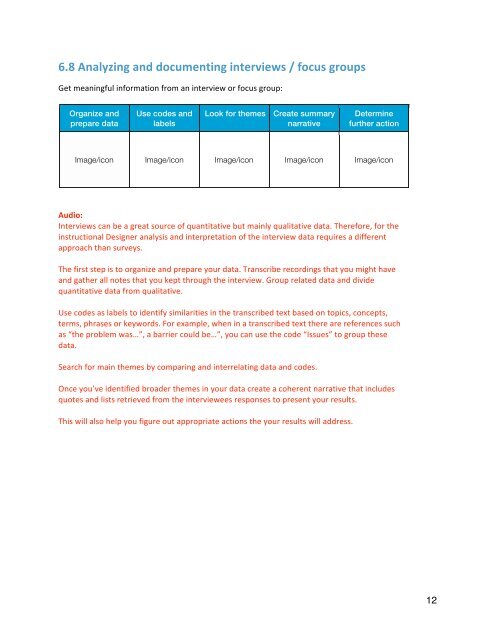You also want an ePaper? Increase the reach of your titles
YUMPU automatically turns print PDFs into web optimized ePapers that Google loves.
6.8 Analyzing and documenting interviews / focus groups<br />
Get meaningful information from an interview or focus group:<br />
Organize and<br />
prepare data<br />
Use codes and<br />
labels<br />
Look for themes Create summary<br />
narrative<br />
Determine<br />
further action<br />
Image/icon Image/icon Image/icon Image/icon Image/icon<br />
Audio:<br />
Interviews can be a great source of quantitative but mainly qualitative data. Therefore, for the<br />
instructional Designer analysis and interpretation of the interview data requires a different<br />
approach than surveys.<br />
The first step is to organize and prepare your data. Transcribe recordings that you might have<br />
and gather all notes that you kept through the interview. Group related data and divide<br />
quantitative data from qualitative.<br />
Use codes as labels to identify similarities in the transcribed text based on topics, concepts,<br />
terms, phrases or keywords. For example, when in a transcribed text there are references such<br />
as “the problem was…”, a barrier could be…”, you can use the code “Issues” to group these<br />
data.<br />
Search for main themes by comparing and interrelating data and codes.<br />
Once you’ve identified broader themes in your data create a coherent narrative that includes<br />
quotes and lists retrieved from the interviewees responses to present your results.<br />
This will also help you figure out appropriate actions the your results will address.<br />
12


